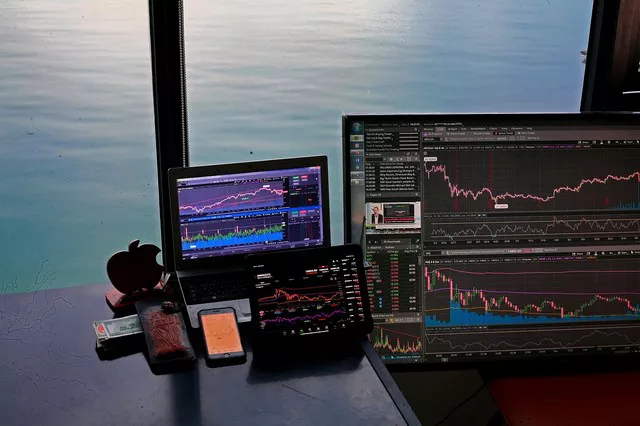EUA futures, or European Union Allowance futures, have become increasingly important in the world of finance and environmental sustainability. These financial instruments play a pivotal role in the European Union’s efforts to combat climate change by reducing greenhouse gas emissions.
Defining EUA Futures
EUA futures represent a financial contract based on the price of European Union Allowances. European Union Allowances, or EUAs, are tradable permits that grant the holder the right to emit one metric ton of carbon dioxide equivalent (CO2e) into the atmosphere. These allowances are a fundamental component of the European Union Emissions Trading System (EU ETS), the world’s largest cap-and-trade program aimed at reducing greenhouse gas emissions within the European Union.
The EU ETS: A Brief Overview
To understand EUA futures fully, it’s essential to grasp the broader context of the EU ETS:
Cap-and-Trade System: The EU ETS is a cap-and-trade system, which means that a cap or limit is set on the total amount of greenhouse gas emissions that industries and power plants can emit. These emissions are divided into allowances, each granting the right to emit a specific amount of CO2e.
Trading Carbon Allowances: Participants in the EU ETS, such as industrial companies, power generators, and airlines, are allocated or required to purchase EUAs corresponding to their emissions. They can then trade these allowances in a market, which includes both the spot market and the EUA futures market.
The Purpose of EUA Futures
EUA futures serve multiple purposes within the EU ETS and the broader financial landscape:
Risk Management: Companies with carbon-intensive operations use EUA futures to manage their exposure to fluctuations in carbon prices. By purchasing EUA futures contracts, they can hedge against the risk of rising carbon prices, which could result in higher compliance costs.
Speculation: Traders and investors participate in the EUA futures market to speculate on future carbon prices. The volatility of carbon markets presents opportunities for profit, making EUA futures an attractive asset class.
Compliance: Entities covered by the EU ETS may use EUA futures to ensure they have enough allowances to cover their emissions. This helps them meet their regulatory obligations and avoid penalties.
How EUA Futures Work
EUA futures contracts are standardized financial instruments traded on various commodity exchanges, including the Intercontinental Exchange (ICE) and the European Energy Exchange (EEX). Here’s how they work:
Contract Specifications: Each EUA futures contract represents a set quantity of EUAs, typically 1,000 allowances. Contracts have predefined expiration dates, with quarterly contracts available for trading.
Price Determination: The price of an EUA futures contract is influenced by supply and demand dynamics in the carbon market. Factors such as regulatory changes, emissions trends, and economic conditions can impact carbon prices.
Settlement: EUA futures contracts can be physically or financially settled. In physical settlement, the contract holder receives the actual EUAs upon expiration. Financial settlement involves a cash payment based on the contract’s settlement price.
Market Participants
Various participants engage in the EUA futures market, each with distinct motivations:
Industrial Companies: Large industrial companies, including those in the energy, manufacturing, and transportation sectors, use EUA futures for hedging purposes to manage compliance costs.
Financial Institutions: Banks, hedge funds, and other financial institutions participate in EUA futures trading to profit from price fluctuations. They provide liquidity to the market and facilitate price discovery.
Compliance Buyers: Entities covered by the EU ETS, such as power generators, may buy EUA futures to ensure they have sufficient allowances to cover their emissions and meet regulatory requirements.
Carbon Offset Projects: Some organizations involved in carbon offset projects may also use EUA futures to hedge against future carbon price volatility, thereby securing revenue from carbon credits.
The Impact of EUA Futures on Climate Goals
EUA futures play a critical role in advancing climate goals in the European Union and beyond:
Price Signals: The carbon price determined by the EUA futures market provides a clear signal to businesses and investors about the cost of emitting greenhouse gases. A higher carbon price encourages emissions reductions and investments in cleaner technologies.
Revenue Generation: Revenues generated from the auctioning of EUAs are often reinvested in climate-related projects, such as renewable energy and energy efficiency initiatives.
Market Expansion: The success of the EU ETS and the EUA futures market has inspired the development of similar emissions trading systems in other regions, fostering a global effort to address climate change.
Challenges and Considerations
While EUA futures have proven effective in reducing emissions and driving sustainable practices, they are not without challenges:
Price Volatility: Carbon markets can experience price volatility, which can impact the cost of compliance for regulated entities and create uncertainty for market participants.
Regulatory Changes: Ongoing adjustments to the EU ETS framework and other emissions regulations can influence the supply and demand for EUAs, affecting market dynamics.
Global Coordination: Achieving global coordination in emissions reduction efforts remains a challenge, as various regions have different carbon pricing mechanisms and goals.
The Future of EUA Futures
The role of EUA futures in the fight against climate change is expected to evolve in the coming years:
Market Expansion: As carbon pricing gains traction globally, the demand for carbon-related financial instruments like EUA futures may increase. New markets and products may emerge to facilitate emissions reductions.
Regulatory Enhancements: Continued efforts to refine and strengthen emissions trading systems are likely to impact the structure and functioning of EUA futures markets.
Integration with Sustainable Finance: EUA futures may become more closely integrated with sustainable finance initiatives, aligning financial incentives with environmental and social goals.
Conclusion
EUA futures are a crucial tool in the fight against climate change, representing a bridge between environmental sustainability and financial markets. They serve multiple functions, from risk management and speculation to compliance with emissions regulations. As the world intensifies its efforts to combat climate change, the role of EUA futures in pricing carbon and driving sustainable practices is expected to grow. Understanding the intricacies of EUA futures is essential for financial professionals, businesses, and policymakers alike as they navigate the evolving landscape of environmental finance.


